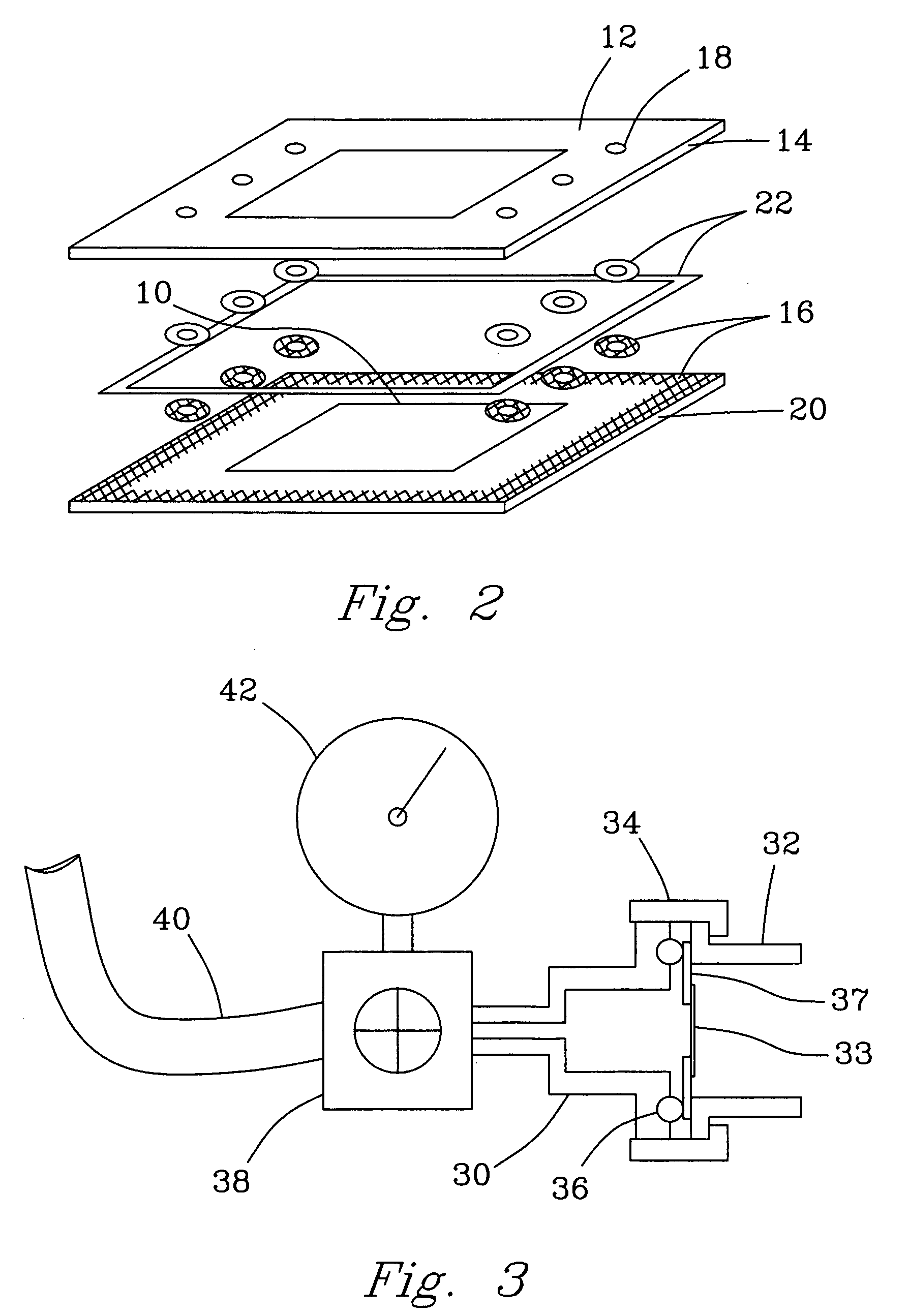[0008] It is therefore an object of the present invention to provide a method by which a seal may be formed between a metal part and a second part that will remain gas tight in high temperature operating environments which experience frequent thermal
cycling. It is a further object of the present invention to provide the seal formed by this method as having insulating properties which will prevent electrical
conductivity between the first metal part and the second part. These and other objects of the present invention are achieved by first providing a first metal part and a second part. The second part may be
ceramic or it may be metallic and treated in the manner described below for the first metal part. A metallic reinforcing material, such as a porous mesh or series of metallic protuberances (including but not limited to metal spheres, particles, wires, screens and fibers), is then attached to the first metal part. Any prior art method for attaching the reinforcing material to the metal part that will form a durable, strong connection between the screen or other reinforcing material and the first metal part is suitable, including without limitation,
brazing,
welding,
sintering, and the like. A glass forming material is then positioned in between the first metal part and the second part, a seal is formed between the first metal part and the second part by heating the glass to a temperature suitable to soften the glass forming material. In this manner, a glass or glass-
ceramic layer is formed which is bonded on one side to the first metal part and bonded on the opposing side to the second part. Prior to cooling, the
molten glass thus formed will infiltrate through the reinforcing material and thereby encapsulate at least a portion of the attached metal screen or metal protuberances. In this way, when tensile, shear, or torsion forces are applied to the joint, a significant portion of the load is transferred from the
glassy matrix to the metal-to-metal bonds between the reinforcing material and the underlying
metal substrate. These metal-to-metal bonds will bear substantially higher loads than will the planar glass-oxide scale-metal interfaces present in traditional glass-metal joints. Secondarily, the reinforcing material also acts as a metal reinforcement phase within the glass or glass-ceramic matrix and thereby enhances the
fracture toughness of the base
glass material via various crack deflection and crack blunting mechanisms. Both effects significantly increase the strength of the composite seal over that of traditional glass-metal seals.
[0014] The glass itself may comprises, but is not limited to, about 10 mole % B2O3, about 35 mole % SiO2, about 5 mole % Al2O3, about 35 mole % BaO, about 15 mole % CaO or other forms of glass from the
barium aluminosilicate family and combinations thereof. The glass is preferably mixed with organic binder materials, such as those that may be purchased from the Ferro Corporation, of Cleveland, Ohio. Appropriate choice of the binder and accompanying
solvent(s) allows either a glass-forming paste to be formulated or thin sheets or tapes of glass-forming material to be prepared. In particular, a paste allows the glass forming materials to be applied to the metal part and the second part in precise locations, and in precise quantities, to allow the formation of the gas tight seal. The metal part and the second part are then placed together and heated at a
sufficient time and at a sufficient temperature to completely oxidize, gasify, and thus remove the organic binder materials, and to allow the glass forming materials to melt and form a glass that infiltrates and at least partially if not completely encapsulates the bonded reinforcing material, thereby forming the gas tight, insulating joint of the present invention. For the preferred materials described herein, heating at 825° C. for 1 hour is sufficient to form the joint.
 Login to View More
Login to View More 

